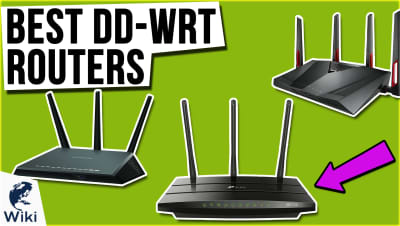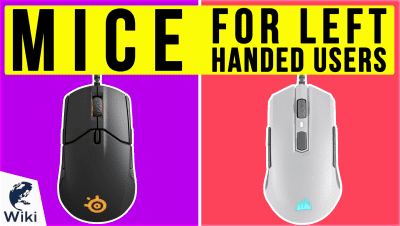Games That Use The Konami Code As Of 2018
The Konami Code, also known as the Contra Code, is one of the most popular cheat codes in the history of video games. It was used in many of Konami's titles, and even found its way into non-Konami games, as well as hidden in websites. We'll go over some of the most popular games and show you how you can use it to unlock easter eggs and special features. To try out some of these games without too much of an investment, check out the list of the Best Cheap Game Rental Services. This video was made with Ezvid Wikimaker.
What Is The Konami Code?
The Konami Code has a few variations, but usually it is Up, Up, Down, Down, Left, Right, Left, Right, B, A, Start.
What Was The First Game To Feature The Konami Code?
The code first appeared in Gradius, a title for the Nintendo Entertainment System released in 1986.
Do All Of Konami's Games Feature The Code?
Some of Konami's contemporary titles do not feature the code. Several game series, such as Contra, Castlevania, Teenage Mutant Ninja Turtles, Metal Gear, and Dance Dance Revolution, have many titles that use the code. Check out the full list to see if your game of choice offers this cheat code.
What Are Some Non-Konami Games That Feature The Konami Code?
- Adventure Island II
- Assassin's Creed III
- BioShock Infinite
- Borderlands 2
- Crash Bandicoot 3: Warped
- Dave Mirra Freestyle BMX 2
- Daytona USA
- EA Sports UFC 2
- Half-Life 2
- Just Dance 3
- League of Legends
- Mario Party
- MLB 10: The Show
- Mortal Kombat 3
- NBA Jam 2010
- Plants vs. Zombies
- Prince of Persia: The Two Thrones
- Quake 4
- Ratchet & Clank: Up Your Arsenal
- Resident Evil 2
- Retro City Rampage
- Rocket League
- RuneScape
- Sonic The Hedgehog 2
- StarCraft II: Legacy Of The Void
- Star Wars: Rebel Assault
- Star Wars: The Clone Wars
- Super Monkey Ball Jr.
- Tales of Phantasia
- Tom Clancy's Rainbox Six 3
- Tony Hawk's Pro Skater 2
To see an extended rundown of games and other forms of media that feature the code, go here for a full list.
In Depth
The Konami Code is a cheat code featured in several of Konami's games. There are many variations, but the most common one is "Up, Up, Down, Down, Left, Right, Left, Right, B, A, Start." It was first used to give players free power-ups in Gradius, a game released for the Nintendo Entertainment System in 1986.
The story behind it is that a developer who was testing Gradius couldn't beat the game, so he added in a cheat code that he could easily remember. It was accidentally left in the game and was later found by other players. This would later be added to some of Konami's future games, including Contra, an action platformer known for being incredibly difficult.
Its inclusion in Contra was where it started becoming popular. The Konami Code was added to the console version of the game because of how hard it is to beat. It gave players thirty lives instead of the default three. This was featured in the first issue of "Nintendo Power" magazine, which led to the cheat code's eventual rise in popularity.
Its inclusion in Contra was where it started becoming popular.
Since then, the code has been used in non-Konami games and even featured in non-gaming related media. Inputting it would usually reveal an easter egg, which is a term used to describe a secret feature or a hidden message. With that in mind, here are of some of the games where you can use the Konami Code.
First up is BioShock Infinite, a first-person shooter developed by Irrational Games. If you're looking for a challenge, you can input the Konami Code in the game's main menu to unlock "1999 Mode". This is an unforgiving game mode that aims to emulate the difficulty of old school FPS games. Normally, you would only unlock this after finishing BioShock Infinite for the first time. The secret code allows hardcore players to access it right off the bat.
The same trick can be used in Metal Gear Rising: Revengeance. Entering the Konami Code at the game's title screen will unlock the "Very Hard" and "Revengeance" difficulty settings. These are normally unlocked by beating the game on "Hard."
The same trick can be used in Metal Gear Rising: Revengeance.
Assassin's Creed 3 also uses the code to uncover a humorous secret. Once you've reached a certain point in the game, you can use the Konami Code to turn a random turkey into an assassin. In order to do this, all you have to do is go to the Davenport Homestead and lean on one of the walls behind the manor. While leaning, you'll get the option to whistle, which will spawn a turkey behind you.
Entering the Konami Code while targeting the turkey will make an assassin's hood appear over its head. After this, the turkey will continue to follow you around until you go to an area it can't reach, though it doesn't really do anything useful.
Next up is Rocket League, a futuristic vehicle-based soccer game made by Psyonix. Entering the Konami Code on the game's startup screen will temporarily replace the theme song and logo with that of Supersonic Acrobatic Rocket-Powered Battle-Cars. Supersonic is one of Psyonix's previous titles and is actually the predecessor of Rocket League.
Entering the Konami Code on the game's startup screen will temporarily replace the theme song and logo with that of Supersonic Acrobatic Rocket-Powered Battle-Cars.
The Konami Code is also one of the many cheats in Retro City Rampage, an action-adventure game that parodies 80s and 90s pop culture. Entering the code will give the player every single weapon in the game.
The Konami Code is also one of Borderlands 2's many easter eggs and pop culture references. At the game's title screen you can enter the code to unlock the "Extra Wubs" mode. This can be found in the options menu under the "Gameplay" tab. Turning it on doesn't actually do anything, and the game even apologizes for this.
In StarCraft 2: Legacy of the Void, using the code will uncover a secret unit. During the "Templar's Charge" mission, the player is given control over a mobile platform. This is controlled via the arrow buttons on the top right corner of the screen. After going up from its initial position, you can input the Konami Code to reveal a secret button labeled "Do Not Push". Pushing it will spawn a Tauren Marine, a joke unit based on the Tauren race featured in WarCraft lore.
Pushing it will spawn a Tauren Marine, a joke unit based on the Tauren race featured in WarCraft lore.
There are many other titles that use the Konami Code, but these are some of the most recent examples. The code hasn't been used much in video games released for the eighth generation of consoles, which includes the Xbox One, Wii U, and PlayStation 4. Even some of Konami's recent games, such as Metal Gear Solid 5, haven't used it.
Despite this, the Konami Code continues to appear in other forms of media, further cementing its place in popular culture. Even in 2017, the code has appeared in the most unlikely places, such as the Bank of Canada's website.
























